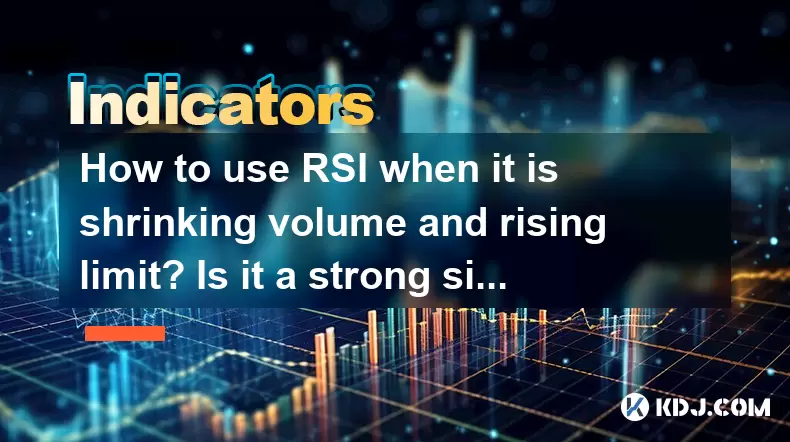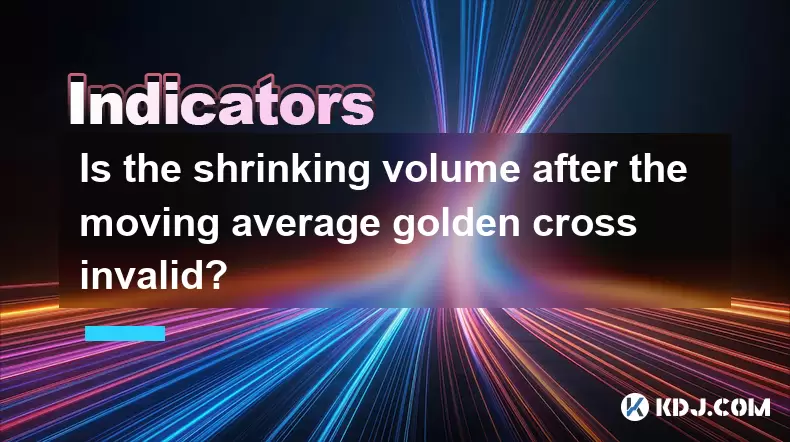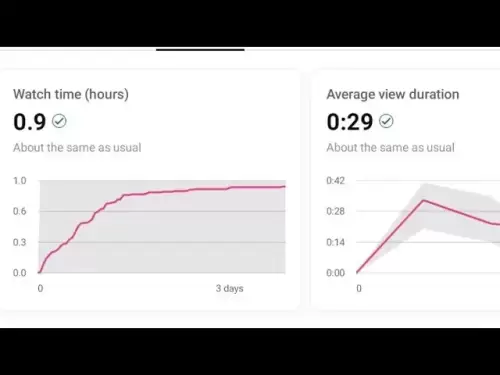-
 Bitcoin
Bitcoin $103,456.1111
0.49% -
 Ethereum
Ethereum $2,414.9631
0.02% -
 Tether USDt
Tether USDt $1.0006
0.05% -
 XRP
XRP $2.1083
0.24% -
 BNB
BNB $634.8760
-0.76% -
 Solana
Solana $139.8437
1.94% -
 USDC
USDC $0.9998
-0.01% -
 TRON
TRON $0.2737
0.97% -
 Dogecoin
Dogecoin $0.1602
0.20% -
 Cardano
Cardano $0.5737
1.08% -
 Hyperliquid
Hyperliquid $32.9779
-2.54% -
 Bitcoin Cash
Bitcoin Cash $474.8886
-1.80% -
 Sui
Sui $2.6272
-1.99% -
 Chainlink
Chainlink $12.4878
0.14% -
 UNUS SED LEO
UNUS SED LEO $8.9234
0.35% -
 Stellar
Stellar $0.2411
-0.18% -
 Avalanche
Avalanche $17.0274
-0.70% -
 Toncoin
Toncoin $2.8936
-1.11% -
 Shiba Inu
Shiba Inu $0.0...01112
-0.58% -
 Litecoin
Litecoin $82.6982
1.33% -
 Hedera
Hedera $0.1423
-0.05% -
 Monero
Monero $314.8455
3.26% -
 Ethena USDe
Ethena USDe $1.0006
0.01% -
 Polkadot
Polkadot $3.4043
1.14% -
 Dai
Dai $0.9999
0.01% -
 Bitget Token
Bitget Token $4.2848
-0.13% -
 Uniswap
Uniswap $6.8748
-5.45% -
 Pepe
Pepe $0.0...09661
0.52% -
 Pi
Pi $0.5359
1.19% -
 Aave
Aave $242.9168
-1.03%
How to use RSI when it is shrinking volume and rising limit? Is it a strong signal?
RSI rising with shrinking volume and new price highs in crypto markets may signal strong bullish trend or potential correction; monitor closely.
May 27, 2025 at 08:28 pm

Understanding RSI and Its Components
The Relative Strength Index (RSI) is a momentum oscillator used in technical analysis to measure the speed and change of price movements of a security. Developed by J. Welles Wilder, the RSI is typically displayed as an oscillator (a line graph that moves between two extremes) and can have a reading from 0 to 100. Traditional interpretation and usage of the RSI are often focused on levels of 70 (indicating an overbought condition) and 30 (indicating an oversold condition). However, when discussing RSI in the context of shrinking volume and rising limit, we delve into a more nuanced application of this tool in the cryptocurrency market.
The Role of Volume in RSI Analysis
Volume is a critical component in technical analysis, providing insight into the strength of a price move. In the context of RSI, shrinking volume can indicate waning interest or momentum in the asset's price movement. When volume decreases while the RSI continues to rise, it may suggest that the price increase is not supported by strong market participation. This situation can be particularly relevant in the cryptocurrency market, where liquidity and trader participation can significantly affect price movements.
Understanding Rising Limit in the Context of RSI
Rising limit refers to the situation where the price of an asset is consistently reaching new highs. In the cryptocurrency market, this can be indicative of strong bullish sentiment. However, when combined with the RSI, a rising limit can provide additional context about the sustainability of the price movement. If the RSI is also rising while the price reaches new highs, it might indicate that the asset is still in a strong uptrend, but the interpretation can vary depending on the accompanying volume.
Interpreting RSI with Shrinking Volume and Rising Limit
When the RSI is rising while the volume is shrinking and the price is reaching new highs, it presents a complex scenario for traders. A rising RSI in this context could be interpreted as a strong signal, but it also carries risks. The lack of volume suggests that fewer traders are participating in the price increase, which could lead to a potential reversal if the price fails to attract new buyers. On the other hand, if the RSI continues to rise and the price sustains its upward trajectory, it might indicate that the asset is still in a strong bullish phase, albeit with reduced market participation.
Using RSI in Trading Decisions
To effectively use the RSI in the context of shrinking volume and rising limit, traders should consider the following steps:
- Monitor the RSI and Volume Simultaneously: Keep an eye on both the RSI and the volume chart. If the RSI is rising while the volume is decreasing, it may indicate a potential divergence.
- Analyze the Price Action: Pay close attention to the price action. If the price is reaching new highs with a rising RSI but shrinking volume, it might be a warning sign of an impending correction.
- Use Additional Indicators: Combine the RSI with other technical indicators, such as Moving Averages or the MACD, to get a more comprehensive view of the market.
- Set Clear Entry and Exit Points: Based on the RSI and volume analysis, set clear entry and exit points for your trades. If the RSI indicates overbought conditions and the volume is shrinking, it might be a good time to consider taking profits or tightening stop-losses.
Case Study: Applying RSI to a Cryptocurrency
Let's consider a hypothetical scenario involving a popular cryptocurrency, Bitcoin. Suppose Bitcoin's price is consistently reaching new highs, and the RSI is also rising, but the trading volume is gradually decreasing. Here's how a trader might approach this situation:
- Initial Observation: Notice that the RSI is above 70, indicating overbought conditions, but the price continues to rise.
- Volume Analysis: Observe that the volume is lower than usual, suggesting less market participation in the price increase.
- Decision Making: Given the rising RSI and shrinking volume, the trader might decide to take profits or set a tighter stop-loss to protect against a potential reversal.
- Monitoring: Continuously monitor the RSI and volume. If the volume starts to increase again and the RSI remains high, it might indicate a continuation of the bullish trend.
Is It a Strong Signal?
Whether a rising RSI with shrinking volume and rising limit is a strong signal depends on various factors, including the overall market conditions and the specific cryptocurrency in question. In some cases, it can be a strong signal of an impending correction, especially if the volume continues to decrease. However, if the RSI remains high and the price continues to rise despite the low volume, it might suggest that the bullish trend is still intact, albeit with reduced market participation. Traders should always consider multiple factors and not rely solely on one indicator for their trading decisions.
Frequently Asked Questions
Q: Can the RSI be used effectively without considering volume?
A: While the RSI can be used on its own to identify overbought and oversold conditions, incorporating volume into the analysis provides a more comprehensive view of market dynamics. Volume helps confirm the strength of a price move, making it an essential component when using the RSI for trading decisions.
Q: How often should I check the RSI and volume for optimal trading?
A: The frequency of checking the RSI and volume depends on your trading strategy and time frame. For day traders, checking these indicators every few minutes or hours might be necessary. For swing traders or long-term investors, daily or weekly checks might suffice. It's important to align the frequency of your checks with your trading goals and risk tolerance.
Q: Are there other indicators that can complement the RSI and volume analysis?
A: Yes, several other indicators can complement the RSI and volume analysis. The Moving Average Convergence Divergence (MACD) can help identify trend changes, while Bollinger Bands can provide insights into volatility and potential price breakouts. Combining multiple indicators can enhance your understanding of market conditions and improve your trading decisions.
Q: How can I avoid false signals when using the RSI with shrinking volume and rising limit?
A: To avoid false signals, it's crucial to use the RSI in conjunction with other technical indicators and to consider the broader market context. Additionally, waiting for confirmation from price action and volume can help filter out false signals. Always use stop-loss orders to manage risk and be prepared to adjust your strategy based on new information.
Disclaimer:info@kdj.com
The information provided is not trading advice. kdj.com does not assume any responsibility for any investments made based on the information provided in this article. Cryptocurrencies are highly volatile and it is highly recommended that you invest with caution after thorough research!
If you believe that the content used on this website infringes your copyright, please contact us immediately (info@kdj.com) and we will delete it promptly.
- Ruvi AI: The Audited Token Poised to Outshine Shiba Inu
- 2025-06-22 10:25:12
- Dypians, DeFi, and Sei Network: A Deep Dive into the Latest Trends
- 2025-06-22 10:25:12
- Hacken Security Breach Highlights Risks Across Ethereum and BSC
- 2025-06-22 08:25:12
- SHIB Price, Forecasts, Timelines: Will Shiba Inu Ever Reach the 'One-Cent Dream'?
- 2025-06-22 08:25:12
- Avalanche vs. Ruvi AI: Why Smart Money's on This Audited Token
- 2025-06-22 08:45:12
- Bitcoin Demand on Pause: What's Next for the Crypto King?
- 2025-06-22 08:45:12
Related knowledge

Does the second surge in the RSI overbought zone induce more?
Jun 22,2025 at 08:35am
Understanding the RSI Overbought ZoneThe Relative Strength Index (RSI) is a momentum oscillator commonly used in technical analysis to measure the speed and change of price movements. It ranges from 0 to 100, with values above 70 typically considered overbought and values below 30 considered oversold. When the RSI enters the overbought zone for the firs...

Does the sudden contraction of ATR indicate the end of the trend?
Jun 20,2025 at 11:14pm
Understanding ATR and Its Role in Technical AnalysisThe Average True Range (ATR) is a technical indicator used to measure market volatility. Developed by J. Welles Wilder, ATR calculates the average range of price movement over a specified period, typically 14 periods. It does not indicate direction—only volatility. Traders use ATR to gauge how much an ...

Is it invalid if the DMI crosses but the ADX does not expand?
Jun 21,2025 at 09:35am
Understanding the DMI and ADX RelationshipIn technical analysis, the Directional Movement Index (DMI) consists of two lines: +DI (Positive Directional Indicator) and -DI (Negative Directional Indicator). These indicators are used to determine the direction of a trend. When +DI crosses above -DI, it is often interpreted as a bullish signal, while the opp...

How to filter false signals when the SAR indicator frequently flips?
Jun 21,2025 at 08:43pm
Understanding the SAR Indicator and Its BehaviorThe SAR (Stop and Reverse) indicator is a popular technical analysis tool used in cryptocurrency trading to identify potential reversals in price movement. It appears as a series of dots placed either above or below the price chart, signaling bullish or bearish trends. When the dots are below the price, it...

Is the trend continuation when the Williams indicator is oversold but there is no rebound?
Jun 20,2025 at 11:42pm
Understanding the Williams %R IndicatorThe Williams %R indicator, also known as the Williams Percent Range, is a momentum oscillator used in technical analysis to identify overbought and oversold levels in price movements. It typically ranges from 0 to -100, where values above -20 are considered overbought and values below -80 are considered oversold. T...

Is the shrinking volume after the moving average golden cross invalid?
Jun 22,2025 at 10:42am
Understanding the Moving Average Golden Cross in CryptocurrencyIn the world of cryptocurrency trading, technical indicators play a crucial role in decision-making. One such indicator is the moving average golden cross, which occurs when a short-term moving average crosses above a long-term moving average, typically signaling a bullish trend. This event ...

Does the second surge in the RSI overbought zone induce more?
Jun 22,2025 at 08:35am
Understanding the RSI Overbought ZoneThe Relative Strength Index (RSI) is a momentum oscillator commonly used in technical analysis to measure the speed and change of price movements. It ranges from 0 to 100, with values above 70 typically considered overbought and values below 30 considered oversold. When the RSI enters the overbought zone for the firs...

Does the sudden contraction of ATR indicate the end of the trend?
Jun 20,2025 at 11:14pm
Understanding ATR and Its Role in Technical AnalysisThe Average True Range (ATR) is a technical indicator used to measure market volatility. Developed by J. Welles Wilder, ATR calculates the average range of price movement over a specified period, typically 14 periods. It does not indicate direction—only volatility. Traders use ATR to gauge how much an ...

Is it invalid if the DMI crosses but the ADX does not expand?
Jun 21,2025 at 09:35am
Understanding the DMI and ADX RelationshipIn technical analysis, the Directional Movement Index (DMI) consists of two lines: +DI (Positive Directional Indicator) and -DI (Negative Directional Indicator). These indicators are used to determine the direction of a trend. When +DI crosses above -DI, it is often interpreted as a bullish signal, while the opp...

How to filter false signals when the SAR indicator frequently flips?
Jun 21,2025 at 08:43pm
Understanding the SAR Indicator and Its BehaviorThe SAR (Stop and Reverse) indicator is a popular technical analysis tool used in cryptocurrency trading to identify potential reversals in price movement. It appears as a series of dots placed either above or below the price chart, signaling bullish or bearish trends. When the dots are below the price, it...

Is the trend continuation when the Williams indicator is oversold but there is no rebound?
Jun 20,2025 at 11:42pm
Understanding the Williams %R IndicatorThe Williams %R indicator, also known as the Williams Percent Range, is a momentum oscillator used in technical analysis to identify overbought and oversold levels in price movements. It typically ranges from 0 to -100, where values above -20 are considered overbought and values below -80 are considered oversold. T...

Is the shrinking volume after the moving average golden cross invalid?
Jun 22,2025 at 10:42am
Understanding the Moving Average Golden Cross in CryptocurrencyIn the world of cryptocurrency trading, technical indicators play a crucial role in decision-making. One such indicator is the moving average golden cross, which occurs when a short-term moving average crosses above a long-term moving average, typically signaling a bullish trend. This event ...
See all articles
























































































